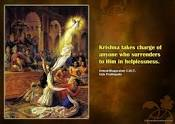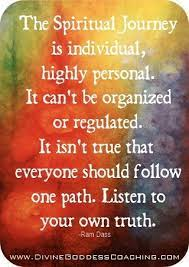The Age-Achievement Relationship: Debunking the Myth
It is a common notion that success is directly proportional to age, that one can only achieve greatness after decades of experience and hard work. However, history has shown us time and again that there is no such relationship between age and achievement. Success can crown someone at any age, from the young to the old, as talent and hard work know no age limit.
Examples of successful individuals who achieved greatness at a young age abound. For instance, William Pitt became the Prime Minister of England when he was only 24 years old. Additionally, Goethe started writing when he was just 10 years old. His masterpiece, Faust, only saw the light of day when he was 80 years old. These examples demonstrate that age is not a barrier to success, as talent and hard work can lead to success at any age.
Similarly, there are many individuals who achieved greatness in their middle age. For instance, Gladstone became the Prime Minister of England when he was 83 years old. Leonardo da Vinci painted his famous Last Supper when he was 77 years old. These examples demonstrate that age does not dictate one's ability to succeed in life.
Old age is not a
barrier to success either. For instance, Coleridge wrote his famous poem, The
Rime of the Ancient Mariner when he was 20 years old, while Kelvine made his
first attempt at scientific research when he was 18 years old. However, he was
83 years old when he brought out an improved version of the navigator compass.
These examples demonstrate that age is not a barrier to success, as long as one
has the passion and dedication to achieve their goals.
Health and
disabilities also do not determine success. For example, Milton was blind, and
Beethoven was deaf, yet they both achieved greatness in their respective
fields. Byron was also deaf, and Demosthenes stammered, yet they both were
successful in their lives. These examples show that success is not determined
by physical health or disabilities, but rather by one's ability to persevere
and overcome obstacles.
In conclusion, the
relationship between age and achievement is a myth. Success can be achieved at
any age, from the young to the old. Talent, hard work, dedication, and
perseverance are the keys to achieving success, regardless of age or physical
health. History has shown us that age is not a barrier to success, and
individuals with disabilities can still achieve greatness. The most important
factor is one's determination and dedication to succeed.
The Soul's Calling: Answering the Signal to Go Inside
At some point in our lives, a signal presents itself, calling us to go inside and explore the depths of our being. However, for many of us, this message goes unnoticed, hidden beneath the layers of our ego. It may take dissatisfaction or multiple wake-up calls for us to finally recognize and respond to this calling. Even those with progressive upbringings need to break free from conditioning and breathe in the freer air.
Ignoring the soul's
calling is spiritual suicide, as the solution to our existential questions
cannot be found on the surface. The first step towards answering this calling
is to reverse the orientation of our consciousness, which requires Herculean
effort and complete surrender at the end of our tapasya. We must remain
vigilant and repeatedly realign ourselves to go deeper within.
Although it may be tempting to retreat into seclusion, Integral Yoga teaches us that the best way to transform ourselves is through the thick of life itself. We are constantly tested and must embrace our station in everyday life, stepping back continuously to retrieve our source. It is essential to maintain poise and protect our inner connection, eventually identifying with the Truth that sits inside. This process solidifies our awareness and transmutes it into consciousness, leading to profound inner change.
True Consciousness is
always aligned with Force, Shakti, and is not merely a witness but an agent of
change. The identity of consciousness with the soul shows us the way to inner
mastery, enabling the conversion of our nature. The whole nature goes through a
profound change, leading to a dynamic shift in our existence.
In our passage through lifetimes, the soul's calling will eventually come. If it arrives in this life, we must embrace it and hold it close to our heart, shifting everything inside and transforming our modality of existence. Surrendering to the calling leads to the discovery of our true purpose and the fulfillment of our soul's journey.
IF HE EXIST
I drive joy there was a doctor in Benaras who
spent 7 minutes in the morning and evening for mediation on God. Knowing this,
his colleagues and friends laughed at him. One day they argued that he was
wasting 7 precious minutes on something, which he had been misled into
believing. The doctor replied, “Well, if God does not exist, I agree that I am
wasting 7 minutes a day. But, if He exists? I am afraid you are wasting your
entire lifetime. I prefer to waste 7 minutes rather than a lifetime. Why should
you grudge me the 7minutes joy that I derive 4m.-
ILLUSTRATED REVIEW :7th heaven moment of the week in ipl csk won by 7 wk ipl gt won by7 Rcb won by 7

















